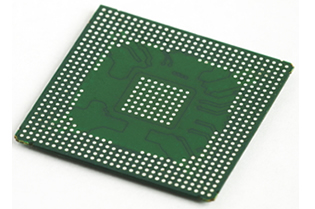Tips for Applying Epoxy Potting Compounds
Many engineers fail to prioritize the choice of potting compounds when designing electronic devices. This should not be the case. The proper assembly and protection of electronic components are directly affected by the kind of encapsulating systems used.
If an engineer uses the proper type of potting compound for any electrical components, then it ensures that these components are protected from damage which can arise from environmental, chemical, mechanical, thermal and electrical conditions. When the potting compound applied to an electronic component is not the one suited for it then it will not give the desired level of protection for it. If the potting compound is poorly chosen then the worse that can happen is damage to the electronic component because it can be unnecessarily subjected to stress and heat.
Epoxy compounds make for the best Meter Mix Dispense potting applications due to the balance in its properties which includes mechanical, thermal, electrical, chemical and adhesion. For best encapsulation, read on for some tips in selecting and applying epoxy potting compounds.
You need to start with the fundamentals of why encapsulation is needed and the fundamentals of temperature complexities. Although there are functional requirements for potting compounds, many engineers do not give it enough serious thought. Asking the right questions at the start of the design process will help to prevent errors. Read facts about epoxy resin here at http://www.britannica.com/EBchecked/topic/190490/epoxy-resin.
Many mistakes in encapsulation design usually involves limited understanding of thermal conditions. The only consideration some engineers make is the selection of potting compounds are the expected maximum and minimum application temperatures. The dwell and ramp times are two important factors that need to be considered in selecting the best potting compound from http://dispenserite.ca/meter_mix_dispense_machine.html and these factors are the ones often missed by engineers.
There is such a thing as property compromise or trade-offs for potting compounds. Formulating a potting compound tailored to specific applications is now possible with the use of additives and fillers having the right mechanical, chemical, electrical and thermal properties.
Many engineers are already considering assembly costs so they choose potting compounds with fast cure schedule.
When potting compounds cure, they do shrink, so take note of that. Failure to consider shrinkage of potting compounds can lead to stress to the electronic component, opening up of leak paths and creation of visual defects. The good news is that with the right potting compound, shrinkage can be controlled. Using filled potting compounds and slow curing epoxies shows less shrinkage than the unfilled, fast cure ones.
Choose a potting compound that flows well so that the electronic components will be encapsulated well with no voids in the coating. This is actually easier said than done and it needs careful attention to the viscosity of the potting compound.
The good thing about controlled shrinkage is that it helps the component in relieving stress caused by expansion and contraction from heat application.
